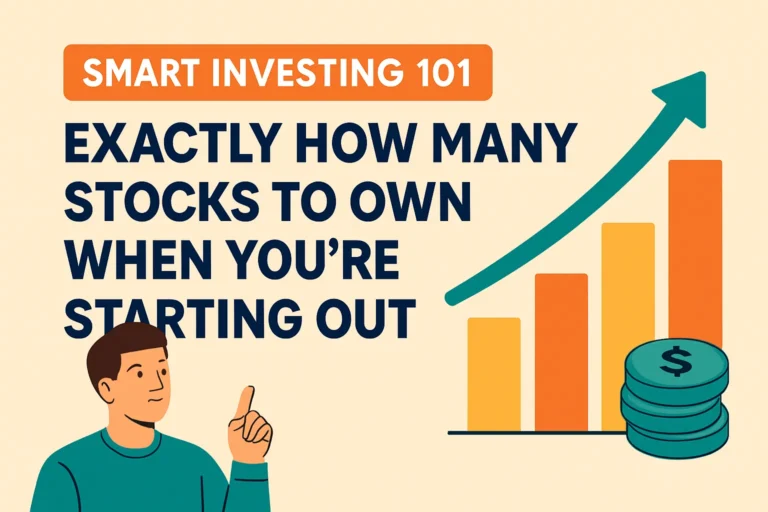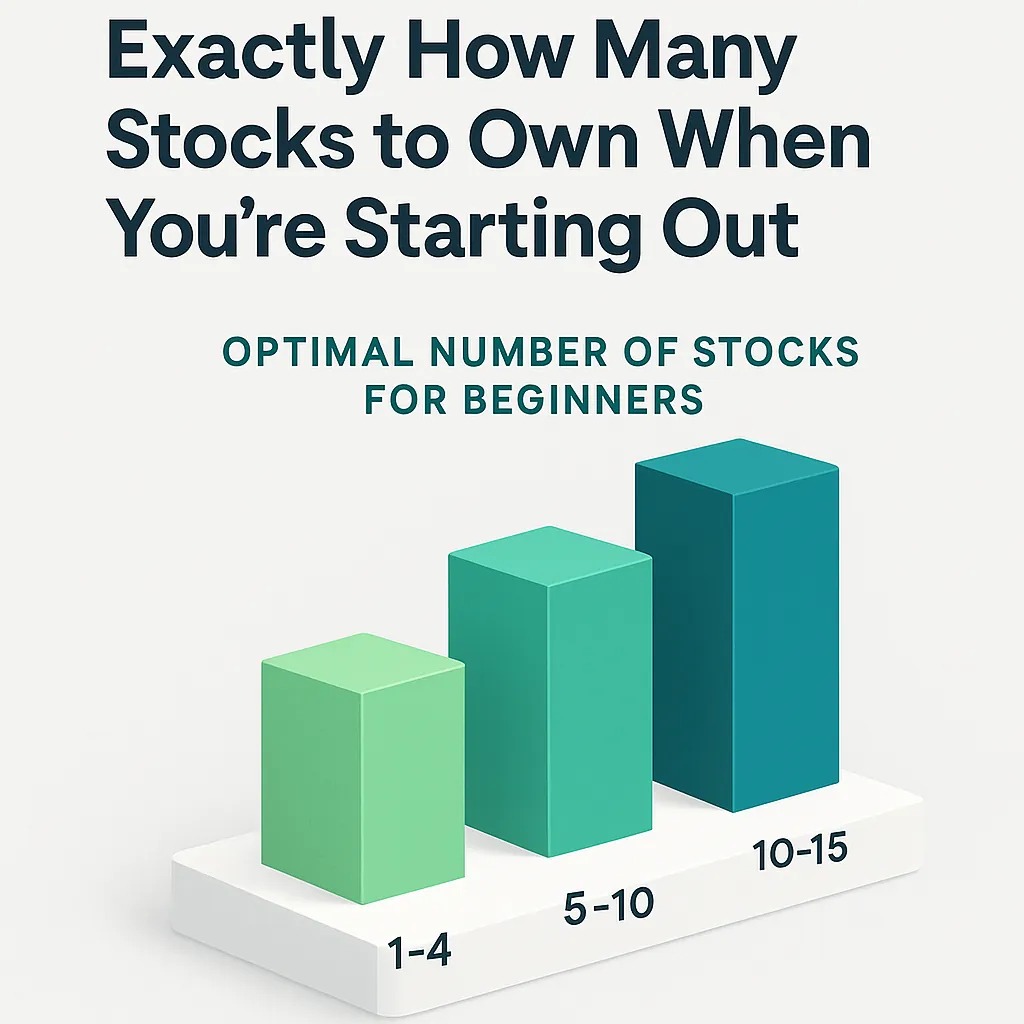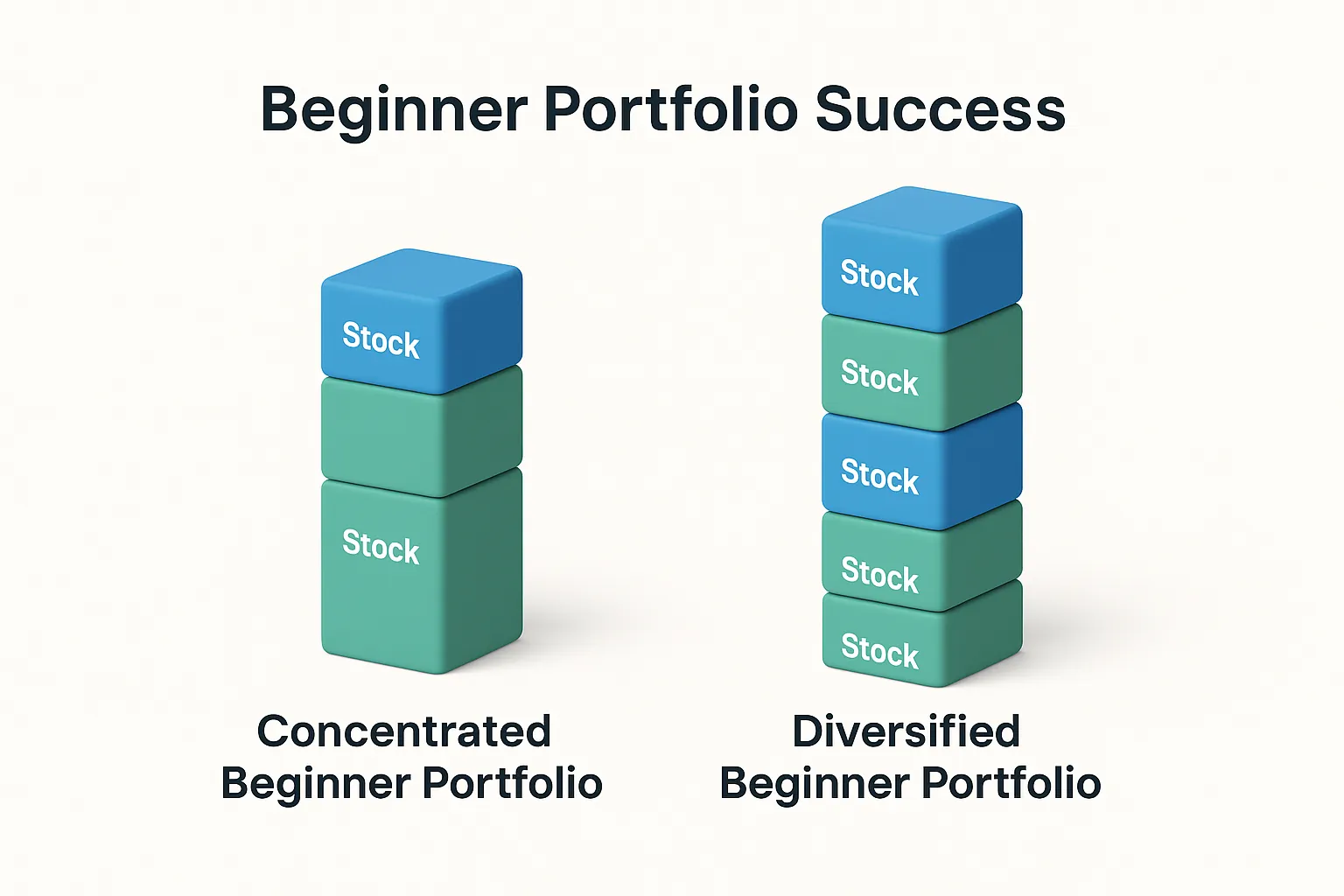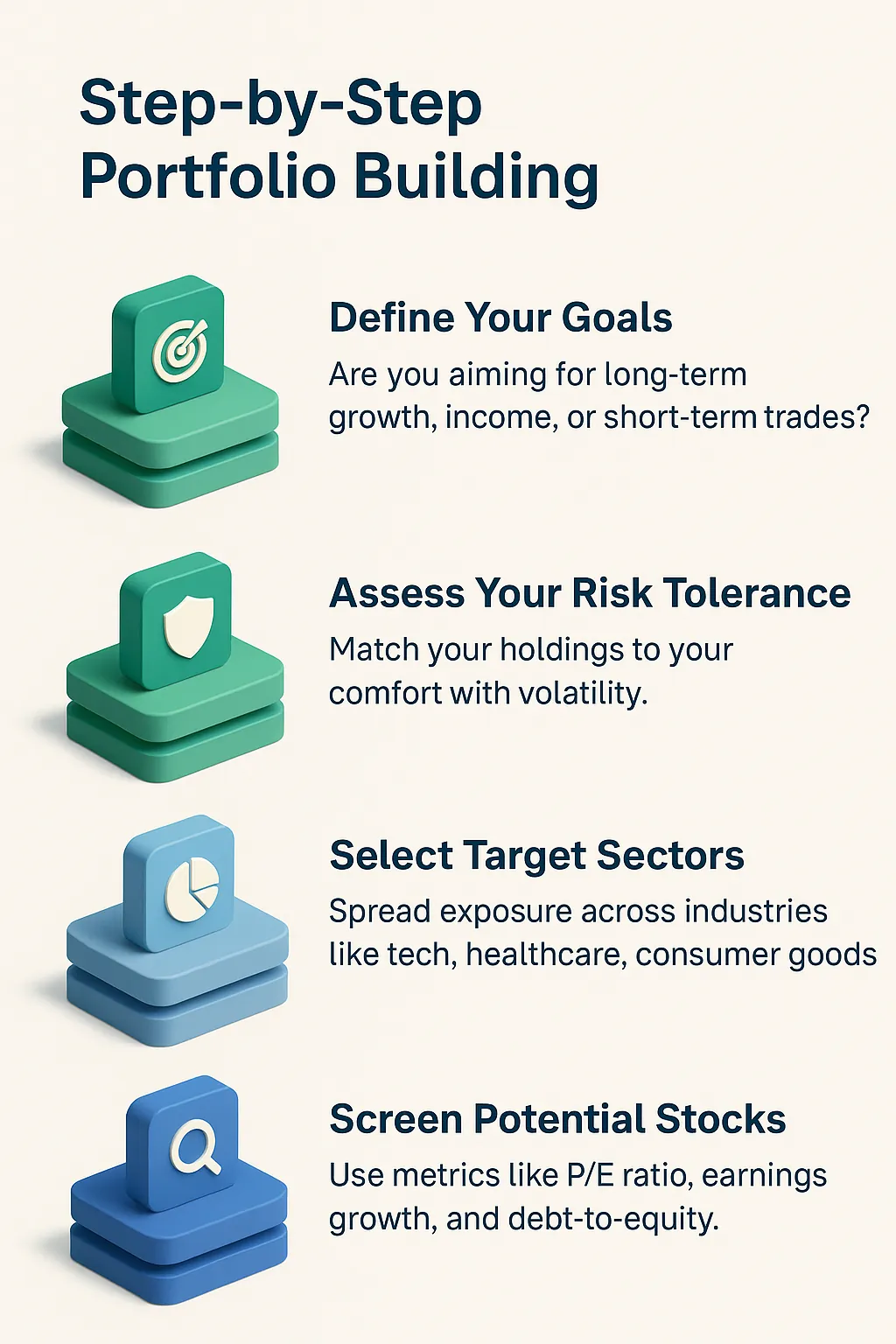Before you click “buy,” remember that owning a stock means owning a slice of a real business. If you treat each ticker as a lottery ticket, you’ll chase noise and miss fundamentals. For a quick refresher on what you actually own, see this guide on business ownership through stocks :contentReference[oaicite:0]{index=0} and this primer on what a stock really is:contentReference[oaicite:1]{index=1}.
The size of your starter portfolio affects three things right away:
- Risk concentration: Too few names and a single earnings miss can rock your account.
- Volatility smoothing: A thoughtful basket of businesses can dampen single‑stock swings.
- Behavioral discipline: A clear limit on positions prevents FOMO and impulse buys.
Many beginners start with either 2–3 “favorite” names (too concentrated) or 25+ small positions (over‑diversified and hard to track). A better way is to anchor your decision to a clear framework—business quality, sector balance, and position sizing—then expand deliberately as your skill and capital grow. For fundamentals that keep you focused, see this step‑by‑step foundation:contentReference[oaicite:2]{index=2}.
“Owning a stock is owning a piece of a business — never forget that.” — Warren Buffett
How Portfolio Count Shapes Your Results
Think of your first portfolio as a focused classroom. With ~8–12 well‑researched positions, you’ll learn faster because each holding is meaningful enough to study, but not so many that you can’t follow news, earnings calls, or industry trends. If information overload is a problem, these tips on filtering headlines can help you cut through the noise:contentReference[oaicite:3]{index=3}.
Starting with a Focused Portfolio
- ✅ Easier to research and monitor each business
- ✅ Clearer learning feedback and conviction building
- ✅ Potential to outperform if selections are strong
- ❌ Higher impact from a single mistake
- ❌ Emotional swings if one name moves sharply
- ❌ Requires ongoing attention and review
Want a structured path from first pick to a balanced portfolio? Explore these resources: beginner‑friendly walkthroughs:contentReference[oaicite:4]{index=4} and focus vs. variety in practice:contentReference[oaicite:5]{index=5}.



